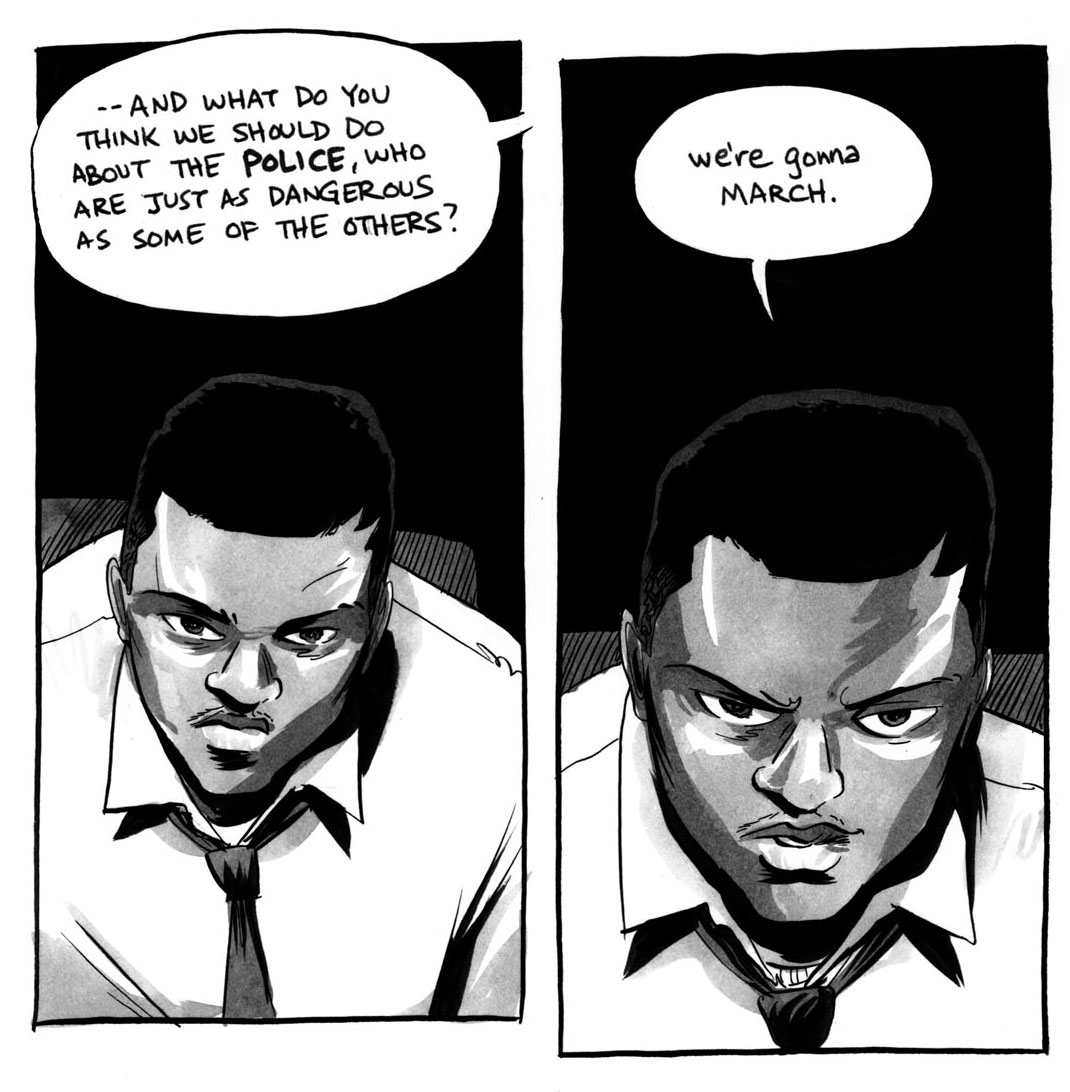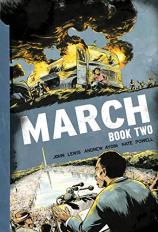Interview: John Lewis
Recently, John Maher of The Book Report Network interviewed Representative John Lewis, the author of the graphic memoir MARCH: Book Two, the second in a series about his experiences during the American Civil Rights Movement. The former chairman of the Student Nonviolence Coordinating Committee, Lewis was one of the leading voices for nonviolent protest and civil disobedience in the 1960s. He is the only living member of the "Big Six," and one of 10 activists to speak to the more than 250,000 Americans gathered at the Lincoln Memorial during the March on Washington in 1963. Lewis has served as the U.S. Representative for Georgia's 5th congressional district since 1987, and is a recipient of the Presidential Medal of Freedom.

The Book Report Network: Why does telling this story matter so much?
Rep. John Lewis: It is important to tell the story. To make it real, to make it plain, and to tell it with passion --- with feeling. I love the way that we tell the story. It’s not just the words, but the illustrations that have the power to make the words come alive. And with using the illustrations, I feel we would kind of reach a different audience than just adults. Young people and children will be drawn to the art, but many adults like to read a story in this form as well.
TBRN: You’ve written about your experience before, in a more traditional autobiography. What made you decide to tell your story again as a series of graphic memoirs?
JL: It was an attempt to make the words come alive. When I first moved to Atlanta back in 1963, at the age of 23, I was here to see Martin Luther King, Jr. preach. And his father would be in the church and would urge his son: “Make it plain, make it real.” I think by using the graphic format, it is making it available to a lot of people who want to read and see those illustrations, and to make them feel it. Especially young children. It’s not just simple words; it’s actions. And that’s what my life has been and what the movement was. It was about action.

TBRN: In an interview GraphicNovelReporter.com conducted with Nate Powell after the release of MARCH: Book One, he noted: “It was initially a single 150-to-200-page graphic novel, but once I started breaking down the script according to my own narrative sensibilities, I realized very quickly that we were dealing with a 450-page epic.” How did you and your co-creators decide how to segment your story into separate books?
JL: In the beginning, we thought it would be maybe one book, and we had to make a decision. It was so much information, and we couldn’t put it in just one book, so we made a decision to do two books, and finally made a decision to do at least three books. I don’t know about Book Four, but we might get there. And it is our hope to bring all of them together at some point as well.
TBRN: What is it like working in a creative partnership with Andrew Aydin and Nate Powell?
JL: It is beautiful. We’ve become like a circle of trust, a band of brothers working together. Andrew is so talented --- he’s able to do all the research, and he knows me so well --- and Nate is such a wonderful human being to work with. Sometimes, when we do our book signings, Nate would sign first, Andrew would sign next, and by the time the book got to me, Nate would draw a chicken [ed.’s note: Lewis raised chickens while growing up on a farm in rural Alabama] and the chicken would say “Amen,” and he knew when it got to me I would laugh.
TBRN: This is your second book in this series, and it’s being published shortly after the release of Selma, a fictionalization of the Selma to Montgomery voting right marches in 1965. What feelings are you experiencing as the anniversaries of these marches approach?
JL: I’m feeling very good about it, with the anniversary of Selma coming up. I think it’s going to have an impact as we move around the country to speak about Book Two and tell the story. I believe it’ll create a great deal of interest in MARCH, especially among people who were so young they weren’t even born when it happened. Like Book One, Book Two is going to reinforce some of the things that they have learned about. And for many people, this might be their first time reading something about the Civil Rights Movement.
This is my life. It’s what I lived, what I breathed. We had a story about a sit-in at a hamburger place in Tennessee, and there was an attempt to fumigate us. If it weren’t for the fire department, we probably would have died. I think from time to time we came to the edge of death. It felt like, “This may be the last protest.” And somehow we survived. I’m grateful to have witnessed all of the changes that have occurred and lived to tell the story. And maybe, just maybe, MARCH will continue to inspire another generation to stand up, speak up and speak out, and to be courageous when they see something that’s not right. That’s why I felt so much pain when the artists were killed in Paris. But we have to be able to tell the truth. We cannot stop telling the truth. People have to read the truth.

TBRN: Protests continue to rage across the country in the wake of the decisions on Michael Brown, Tamir Rice and Eric Garner. What advice do you have for the marchers of this generation?
JL: My advice for the protesters here is to study the literature of the movement, to study MARCH, to watch the videos. And to be committed to the way of peace, the way of love, and the way of non-violence.
TBRN: How much progress toward equality do you believe we’ve made since you marched?
JL: We’ve made a lot of progress. When people say we haven’t made any progress, I say, “Come and walk in my shoes.” Our country is a better country… It’s much better than when we marched on Washington and when we marched across the bridge at Selma.
TBRN: What does this three-book series mean to you?
JL: When I got the first book and saw the very first copy, I read it and kissed the book, and when I got the second, I kissed it. It’s a beautiful book --- even just the cover --- and I may be a little biased, but it’s powerful. And that’s what happened: The burning of the bus on the cover. Being refused seating at a lunch counter. It’s real.
All illustrations by Nate Powell and courtesy of Top Shelf Comix.





